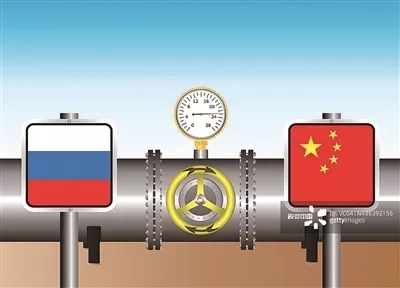
On February 28, the head of the Russian Natural Gas Export Corporation said that the Russian Natural Gas Industrial Group was discussing with CNPC the expansion of Siberian pipelines and other pipelines such as the Far East and Altai, namely the so-called Siberian Force 2 project. As of February 20, the Russian Natural Gas Industry Group has completed 99% of the laying tasks of “ Siberian Power & rdquo; No. 1 Natural Gas Pipeline Project, which will officially supply gas from December 1, 2019, 20 days earlier than originally planned. Project No. 1 is coming to an end and Project No. 2 is eager to try. The prospect of Sino-Russian cooperation in natural gas field is very worth looking forward to.
In fact, & ldquo; Siberian Power & rdquo; is of great significance in alleviating the imbalance between supply and demand in China's natural gas market. In recent years, China's natural gas consumption has increased year by year. According to the forecast of China Petroleum Economic and Technological Research Institute, natural gas consumption in 2018 is 276.6 billion cubic meters, with an annual increase of over 39 billion cubic meters, an increase of 16.6%. Driven by demand, China's natural gas imports continued to grow at a high speed, surpassing Japan as the world's largest natural gas importer in 2018, with annual imports of 125.4 billion cubic meters, a 31.7% jump over the previous year, a growth rate higher than 24.7% in 2017. Although domestic natural gas exploitation is in full swing, it is still difficult to fully meet the rapid growth of market demand, and external force is the only way.
Continuing to try to cooperate with Project 2 is also due to the closer proximity of Sino-Russian natural gas pipelines to China's major consumer markets and the shorter distance between pipelines, so that prices will be more competitive. After the completion of the pipeline between China and Russia, it will also help to stabilize the price of natural gas purchased by China in the international market, which is undoubtedly a good thing for China.
Russia's expansion of gas transmission is an effective supplement to China's imported gas sources. Since the shale gas revolution in the United States, oil and gas production has increased year by year, and oil and gas export control has been relaxed, making the United States from a net importer of oil and gas to a net exporter. In 2016, China received natural gas from the United States for the first time. With the development of Sino-US trade frictions in various fields in 2018, the bilateral cooperation in energy, especially natural gas, has been adversely affected. Although there is great potential for cooperation between China and the United States in natural gas trade in the future, receiving more Russian natural gas will enable China to obtain an effective increase in imported gas sources.
& ldquo; Siberian Power & rdquo; Project promotion is also an effective promotion of China's natural gas supply infrastructure construction. Not in line with China's natural gas consumption, China's current stretched natural gas supply infrastructure, including pipelines, LNG receiving stations and gas storage. According to the statistics of China Petroleum Economic and Technological Research Institute, by the end of 2018, the total mileage of China's long-distance natural gas pipeline was 76,000 kilometers, and 1,540 kilometers of cross-provincial trunk pipeline were built throughout the year. Although most of China's pipeline networks are designed with large diameter and high pressure, compared with developed countries such as the United States, the construction of natural gas pipeline networks is still relatively backward. With the completion of Sino-Russian pipelines, China's pipeline construction concept is expected to upgrade in the future, and infrastructure construction will follow suit.
